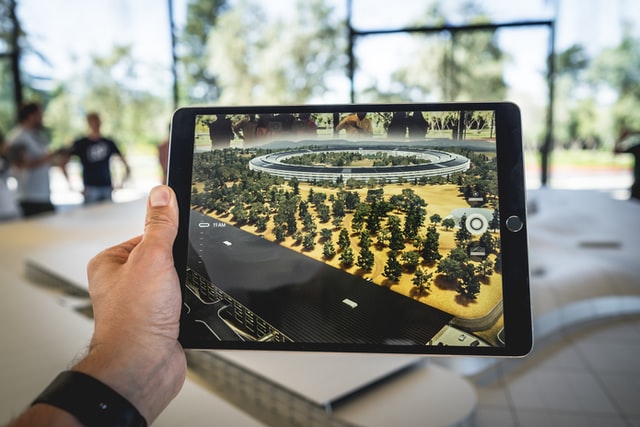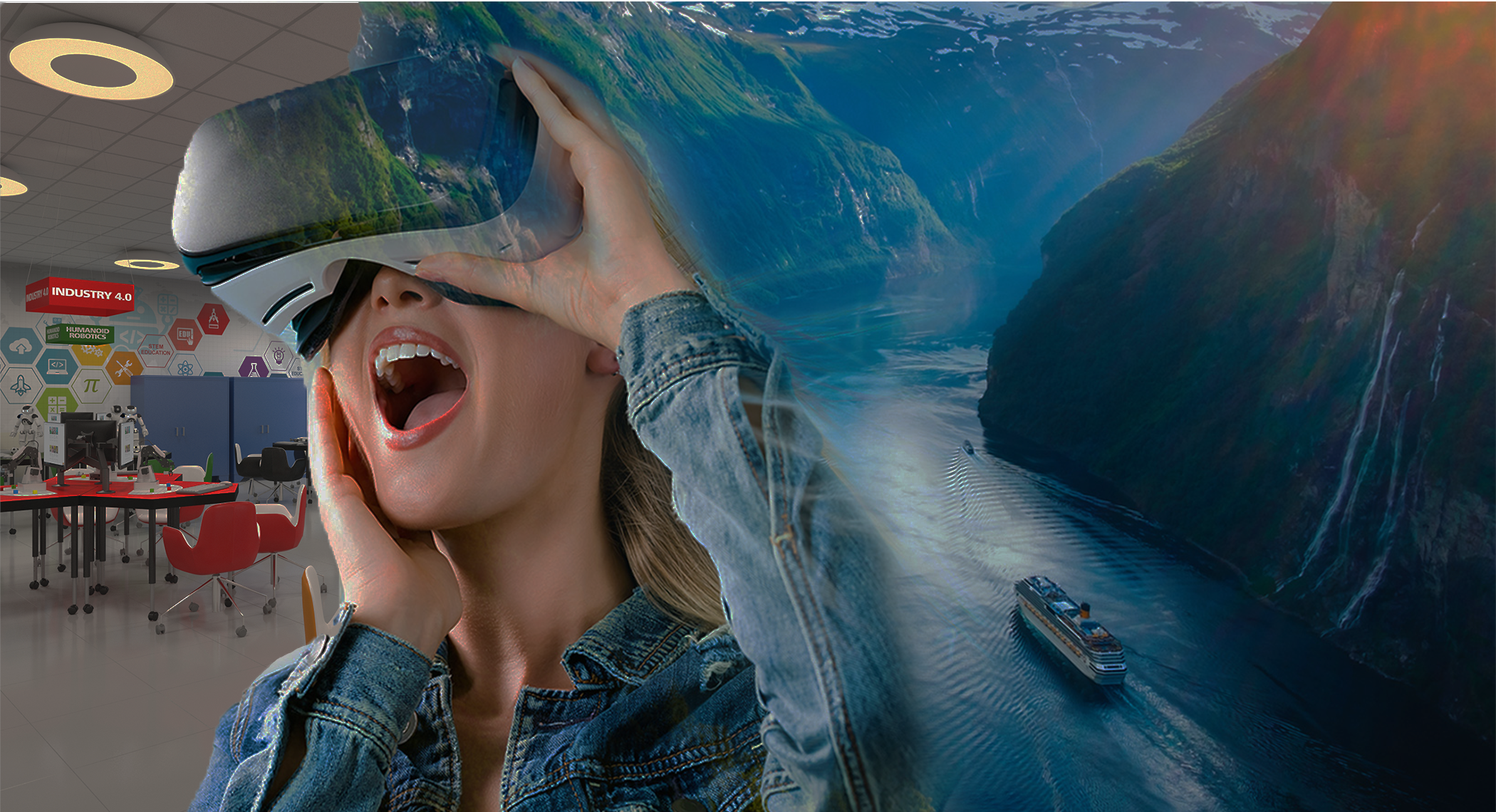By PARKER MCDONOUGH.
 Photo by Patrick Schneider on Unsplash
Photo by Patrick Schneider on Unsplash
Distance learning can impede hands-on learning experiences, but AR has potential to increase virtual student engagement
Schools across the country are well into their second go-round of distance learning at this point. Things seem to be running more smoothly than the first attempt last spring–however, we are still experiencing growing pains to say the least.
Students, parents, and educators have all expressed serious concerns regarding distance learning. In a survey done by The Education Trust, a statewide poll found that 90 percent of parents are worried about their children falling behind academically due to coronavirus-related school closures.
One of the most difficult adjustments to this change, especially for teachers, has been the adoption of digital tools that aid distance learning. We’ve all become much more acquainted with Zoom and Google Meets.
That said, these tools are limited in tackling the serious hurdles that distance learning presents. A recent survey from Educationdata.org found that the number one concern of educators across the country was maintaining student engagement. A sweeping 81 percent of educators list “maintaining student engagement” as their primary concern with distance learning.
How distance learning can lower student retention
Many of us have a hard time paying attention during a lengthy in-person lecture or presentation, and this can be even more difficult if it is online. The Edgar Dale Cone of Experience teaches us that students only retain 20 percent of what they hear and 30 percent of what they see–however, that retention rate jumps to 90 percent when the information is experienced.
For that reason, academia constantly uses active learning techniques like science experiments, field trips, crafts, anatomy labs, or other activities to promote experiential learning.
All of those hands-on experiences have been put on hold for the time being. No beakers or flasks in the science lab, no molecules made of marshmallows and toothpicks, no 3D skeletons, and no visits to the local museum. With the majority of educational experiences put on hold, how can educators expect to maintain an active learning environment? How can students receive the experiential style of learning that increases retention by 3 times that of a virtual Zoom classroom?
AR can be an antidote to virtual classroom shortcomings
The solution: augmented reality (AR). AR is the technology that expands our physical world, adding layers of digital information on top of it. Wait…can you please translate that into simple terms for the rest of us? Do you remember Pokémon GO? Have you ever used a Snapchat filter? The technology behind both of these commonly-used apps is AR.
AR and VR are commonly, and mistakenly, used interchangeably. However, they are very different. Virtual reality (VR) is the technology used when a user is immersed in an entirely virtual world. This requires extra devices like head-mounted displays or goggles. VR makes it hard to differentiate reality and virtual reality.
AR, on the other hand, is when the user is immersed in a mix of the real world and a virtual world. This makes it possible to interact with both worlds and clearly distinguish between them. The largest perk of AR is that it does not require additional hardware or devices. AR is easy to use and readily available with the devices we already own, like smartphones and tablets.
Augmented Reality is the future of education. Many children are visual learners and a 3D/AR model of the solar system or a human DNA strand is far more interactive and engaging than a picture in a textbook or a slideshow on a screen. The educational system has been using the same visual aids for decades – photos, videos, PowerPoint slides, and infographics. It is time for the visual aids that are used in classrooms to catch up to speed. In fact, it’s time for an experiential aid.
Implementing AR in your classroom
AR brings learning to life and allows students to experience education during distance learning. With AR, students can walk through Stonehenge, tour the Egyptian pyramids, go on a virtual field trip of the Louvre Museum, or explore the cavities of the human heart – all from the comfort of their homes. Students can even take a journey to outer space or visit UNESCO world heritage sites.
So how can teachers use AR with their students? AR platforms for education are increasing in popularity because of their seamless integration into existing teaching curriculums. Because AR is an additional teaching resource, it is extremely simple to add an AR experience to the presentation slides, handouts, or emails teachers have already created. AR models can be implemented into teaching materials by simply copying and pasting a QR code into existing PowerPoint slides. With the simple scan of a QR code, students can instantly experience a model in Augmented Reality from any location.
The intersection between AR and education is an obvious and endless road of possibilities. Technology is finally reaching a point where it is more accessible than ever before, and every student deserves to benefit from it. Maintaining student engagement during a lengthy Zoom lecture is a lot easier for teachers when students can expect to explore Mount Rushmore or the muscular system in AR at some point. Education is meant to be experienced, and distance learning should not get in the way of that simple truth.
Discover more AR resources with RobotLAB!

About the Author:
Parker McDonough is Head of Seek Education, an online platform designed to encourage interactive learning through augmented reality.


